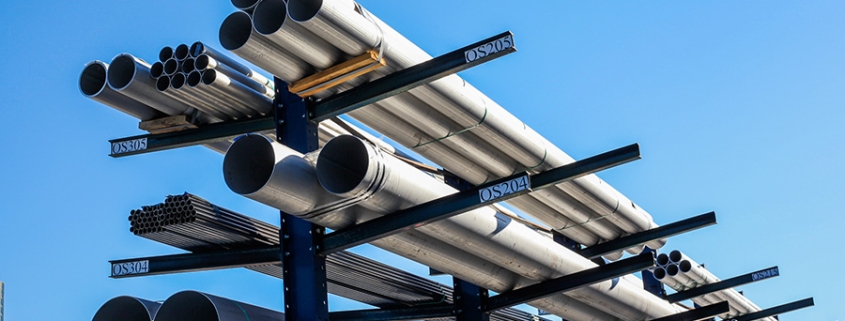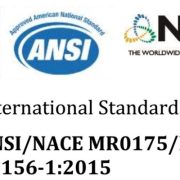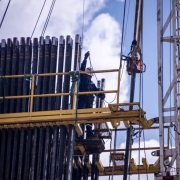What is the Difference Between NACE MR0175 and NACE MR0103?
Introduction
In industries like oil and gas, where equipment and infrastructure are routinely exposed to harsh environments, selecting materials that can withstand corrosive conditions is crucial. Two essential standards that guide material selection for environments containing hydrogen sulfide (H₂S) are NACE MR0175 and NACE MR0103. While both standards aim to prevent sulfide stress cracking (SSC) and other hydrogen-induced damage, they are designed for different applications and environments. This blog provides a comprehensive overview of the differences between these two essential standards.
Introduction to NACE Standards
NACE International, now part of the Association for Materials Protection and Performance (AMPP), developed NACE MR0175 and NACE MR0103 to address the challenges posed by sour service environments—those containing H₂S. These environments can lead to various forms of corrosion and cracking, which can compromise the integrity of materials and potentially lead to catastrophic failures. The primary purpose of these standards is to provide guidelines for selecting materials that can resist these damaging effects.
Scope and Application
NACE MR0175
Primary Focus: NACE MR0175, or ISO 15156, primarily targets the upstream oil and gas industry, including exploration, drilling, production, and transportation of hydrocarbons.
Environment: The standard covers materials used in oil and gas production in sour service environments. This includes downhole equipment, wellhead components, pipelines, and refineries.
Global Use: NACE MR0175 is a globally recognized standard widely used in upstream oil and gas operations to ensure the safety and reliability of materials in sour environments.
NACE MR0103
Primary Focus: NACE MR0103 is designed explicitly for the refining and petrochemical industries, focusing on downstream operations.
Environment: The standard applies to process plants with hydrogen sulfide, particularly in wet H₂S environments. It is tailored to the conditions found in refining units, such as hydroprocessing units, where the risk of sulfide stress cracking is significant.
Industry-Specific: Unlike NACE MR0175, which is used in a broader range of applications, NACE MR0103 focuses more on the refining sector.
Material Requirements
NACE MR0175
Material Options: NACE MR0175 offers many material options, including carbon steels, low-alloy steels, stainless steels, nickel-based alloys, and more. Each material is categorized based on its suitability for specific sour environments.
Qualification: Materials must meet stringent criteria to be qualified for use, including resistance to SSC, hydrogen-induced cracking (HIC), and sulfide stress corrosion cracking (SSCC).
Environmental Limits: The standard limits H₂S partial pressure, temperature, pH, and other ecological factors determining the material’s suitability for sour service.
NACE MR0103
Material Requirements: NACE MR0103 focuses on materials resisting SSC in the refining environment. It provides specific criteria for carbon, low-alloy, and certain stainless steels.
Simplified Guidelines: Compared to MR0175, the material selection guidelines in MR0103 are more straightforward, reflecting the more controlled and consistent conditions typically found in refining operations.
Manufacturing Processes: The standard also outlines welding, heat treatment, and fabrication requirements to ensure materials maintain their resistance to cracking.
Certification and Compliance
NACE MR0175
Certification: Compliance with NACE MR0175 is often required by regulatory bodies and is critical for ensuring the safety and reliability of equipment in sour oil and gas operations. The standard is referenced in many international regulations and contracts.
Documentation: Detailed documentation is typically required to demonstrate that materials meet the specific criteria outlined in MR0175. This includes chemical composition, mechanical properties, and testing for resistance to sour service conditions.
NACE MR0103
Certification: Compliance with NACE MR0103 is typically required in contracts for equipment and materials used in refining and petrochemical plants. It ensures that the selected materials can withstand the specific challenges of refinery environments.
Simplified Requirements: While still rigorous, the documentation and testing requirements for MR0103 compliance are often less complex than those for MR0175, reflecting the different environmental conditions and risks in refining compared to upstream operations.
Testing and Qualification
NACE MR0175
Rigorous Testing: Materials must undergo extensive testing, including laboratory tests for SSC, HIC, and SSCC, to qualify for use in sour environments.
Global Standards: The standard aligns with international testing procedures and often requires materials to meet stringent performance criteria in the harshest conditions found in oil and gas operations.
NACE MR0103
Targeted Testing: Testing requirements are focused on the specific conditions of refinery environments. This includes testing for resistance to wet H₂S, SSC, and other relevant forms of cracking.
Application-Specific: The testing protocols are tailored to the needs of refining processes, which typically involve less severe conditions than those found in upstream operations.
Conclusion
While NACE MR0175 and NACE MR0103 both prevent sulfide stress cracking and other forms of environmental cracking in sour service environments, they are designed for different applications.
NACE MR0175 is the standard for upstream oil and gas operations. It covers a wide range of materials and environmental conditions and has rigorous testing and qualification processes.
NACE MR0103 is tailored for the refining industry. It focuses on downstream operations and uses simpler, more targeted material selection criteria.
Understanding the differences between these standards is essential for selecting suitable materials for your specific application and ensuring your infrastructure’s safety, reliability, and longevity in hydrogen sulfide environments.







